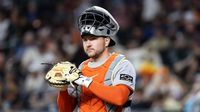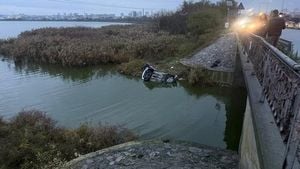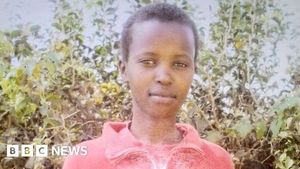San Francisco Giants fans have experienced a whirlwind of emotions over the past year—highs that soared into the history books and lows that left the faithful wondering if brighter days are truly ahead. At the center of this rollercoaster sits Patrick Bailey, the team’s Gold Glove-caliber catcher, whose 2025 campaign was a study in contrasts: defensive wizardry paired with offensive struggles, all while the franchise maneuvered through massive financial commitments and looming changes to the very fabric of the game.
Let’s rewind to July 8, 2025, a night that will be remembered by Giants fans for years to come. Trailing by two runs in the bottom of the ninth against the Philadelphia Phillies, Bailey delivered an electrifying walk-off three-run homer that ricocheted off the right-center field wall and sent Oracle Park into a frenzy. According to league records, it was only the third time in MLB history that a catcher had pulled off such a feat. The Giants’ dugout erupted, and for a brief moment, the season’s promise seemed limitless.
But baseball is a game of momentum, and the Giants’ fortunes turned sharply after that unforgettable win. They dropped the next contest 13-0, limped into the All-Star break with a 1-3 record, and stumbled out of it with a 2-10 stretch. The dream of contention faded fast, and by the trade deadline, San Francisco was offloading players, effectively waving the white flag on their playoff aspirations.
Bailey’s season mirrored the team’s turbulence. Statistically, he played in 135 games and stepped to the plate 452 times, slashing .222/.277/.325 with six home runs and 55 RBIs. His 73 OPS+ and 70 wRC+ painted the picture of a hitter struggling to find his rhythm. The advanced metrics didn’t pull any punches, either: a .265 wOBA and a 29.4% strikeout rate marked his worst professional season at the plate. Early on, things were especially rough—Bailey hit just .160/.207/.235 in March and April, striking out in 36% of his appearances and failing to clear the fences until his 44th game, deep into May.
Yet, as the season wore on, Bailey showed flashes of improvement. By September and October, he was swinging a much hotter bat, slashing .288/.321/.493 and launching four home runs. Was it a sign of things to come, or just a small-sample-size blip? Giants fans are right to wonder. After all, Bailey’s career to this point has been marked by early-season strength followed by late-season fadeouts, so this reversal was a welcome—if not entirely reassuring—change.
Despite his offensive woes, Bailey’s value to the Giants was undeniable on the defensive side. He led all of Major League Baseball in Fielding Run Value (FRV) with a remarkable 31, a full eight runs ahead of his nearest competitor. His pitch framing was nothing short of elite, stealing countless strikes for his pitchers and earning him a reputation as the best defensive catcher in the game. Bailey also threw out 27 of 88 would-be base stealers, a 30.7% success rate that dwarfed the league average of 23.2%, earning him five fielding runs for his arm—third-best among all catchers.
Durability is often an overlooked trait for catchers, but Bailey’s resilience shone through. He started a career-high 114 games and played in 132, even after spending 10 days on the injured list in June. The Giants’ inability to provide him with a reliable backup—Sam Huff and Andrew Knizner both underwhelmed—meant Bailey was pressed into action more than ever. The wear and tear may have contributed to his offensive struggles, but his commitment to the team was never in question.
Of course, not every moment was a struggle. Bailey also delivered another walk-off grand slam against the archrival Los Angeles Dodgers, a highlight that stood out as the Giants’ second-best win of the year. His knack for the dramatic, even in a down year, kept fans on the edge of their seats.
Off the field, the Giants’ front office was anything but idle. New president of baseball operations Buster Posey made headlines with a series of bold financial moves. The spending spree began with a $151 million contract for third baseman Matt Champman in September 2024. Posey followed up by inking shortstop Willy Adames to a franchise-record seven-year, $182 million deal in free agency. Then, in June 2025, the Giants absorbed the remainder of Rafael Devers’ massive contract—$226.5 million through 2033—after acquiring the slugger from the Boston Red Sox. By the time all was said and done, San Francisco’s payroll commitments had ballooned, forcing the club to search for savings wherever possible.
That’s where salary arbitration comes into play. According to MLB Trade Rumors, the Giants have five arbitration-eligible players for 2026, with a combined estimated bill of around $13.5 million. The biggest projected payday belongs to reliever Ryan Walker, who is slated to earn $2.5 million after a 5-7 season that included a 4.11 ERA, 68 relief appearances, 60 strikeouts, 18 walks, and an impressive 17 saves. Bailey, meanwhile, is entering his first year of arbitration eligibility and is projected to earn $2.2 million—a figure that reflects his Gold Glove-level defense but acknowledges his underwhelming bat.
The rest of the arbitration class includes JT Brubaker ($2.1 million), Andrew Knizner ($1.3 million), and Joey Lucchesi ($2 million). Most of these cases are expected to settle before reaching a hearing, which is typical for arbitration-eligible players with three to six years of service time (or those who qualify as "Super 2" under league rules).
Looking ahead, the 2026 season brings another wrinkle: the introduction of the Automated Ball-Strike (ABS) Challenge System. Teams will be able to challenge two ball or strike calls per game, a change that could diminish the value of Bailey’s exceptional pitch framing. But if anyone can adapt, it’s Bailey—a player whose defensive instincts and quick thinking have already set him apart. As one observer quipped, "Bailey is so good at pitch framing, he may figure out a way to dupe the robots as well." Giants fans can only hope that’s true.
With big contracts on the books, arbitration decisions looming, and a core built around defensive excellence, the San Francisco Giants are entering a pivotal era. Bailey’s glove remains a cornerstone, but for this team to truly contend, they’ll need his bat—and the rest of the roster—to catch up. The coming months will reveal whether the Giants’ bold investments and Bailey’s late-season resurgence can translate into sustained success, or if more growing pains are on the horizon.




